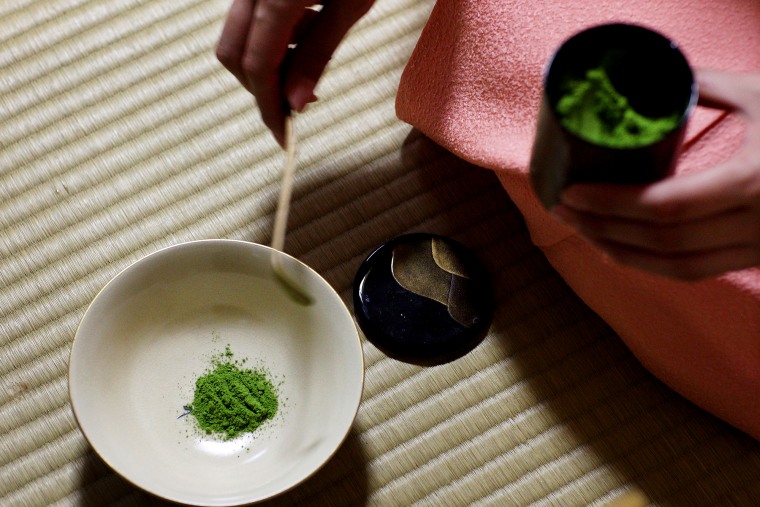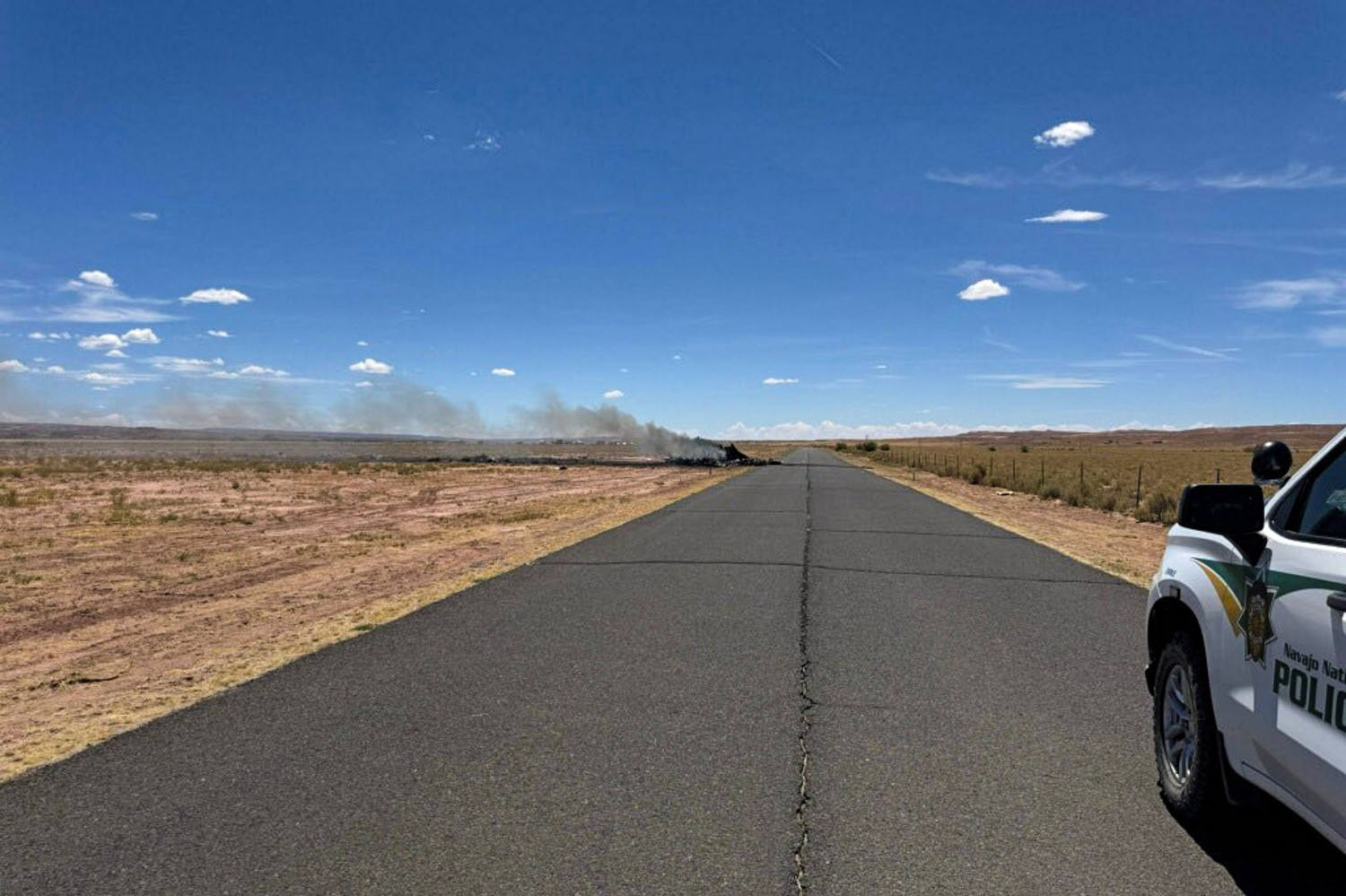Matcha faces shortage, higher prices, tariffs

Your midday matcha latte is getting more expensive and harder to come by as supply shortages and skyrocketing demand squeeze cafés.
Matcha, the bright green powder swirled into drinks, ice cream and pastries, has soared in popularity over the last few years, fueled by social media and a post-pandemic tourism boom in Japan.
But Japan’s supply is drying up with record heat and a shortage of tea farmers, spiking prices that could rise even more with new 15% tariffs on Japanese imports into the United States. Tea experts say true matcha is only grown and produced in Japan. The shortage has made it harder for cafés to get matcha.
“Normally when we order our powder, it should take about one month to two months,” said Alfred Chan, manager and co-founder of Urban Matcha, a Las Vegas café that opened in 2023. “But right now it takes over about six months to get to us.”
Matcha comes from the tea plant, Camellia sinensis. The plant was brought from China to Japan around 750 CE, according to Rebecca Corbett, a professor of Japanese studies at the University of Southern California. But, she said, matcha itself wasn’t made in Japan until around 1250 CE and eventually came to only be produced there.

Matcha making is a specialized art: A traditional cup involves grinding shade-grown tea leaves into a fine powder, then mixing that powder into hot water with a bamboo whisk. The drink is used in Japanese tea ceremonies and appreciated for its apparent health benefits, with some evidence that matcha could help lower blood pressure, reduce inflammation and improve concentration.
“People do like the health benefits of matcha, and that’s not new,” Corbett said. “In the 1200, 1300s, people in Japan were talking about that and promoting drinking matcha as a cure for hangovers, for example.”
Now, matcha’s a global sensation, with customers waiting in long lines at cafés to get their hands on a cup.
“I get matcha all the time,” said Emma Willingham, a customer at Matcha Cafe Maiko in New York City. “Every time someone else is getting coffee, I’m like, ‘OK, give me the matcha.’”
Tea experts say social media helped fuel the matcha craze, with people posting their colorful creations.
“If you look on Instagram and TikTok, the bright green color of matcha, it’s very visually appealing,” Corbett said. “And there’s also the cool Japan factor, the sort of aesthetics of trendy minimalism. It’s all being packaged around matcha.”
Tourism in Japan has climbed over the last few years, with a record-breaking 36.9 million people visiting in 2024, according to the Japan National Tourism Organization and the Japan Tourism Agency. Some of those travelers have returned home with bags full of matcha.
The demand has gotten so high that some Japanese companies have begun to limit the amount of matcha people can buy.
It’s not just high demand parching the industry — it’s also limited supply. The number of tea farmers has dropped dramatically over the past couple decades: Between 2000 and 2020, 4 out of every 5 tea producers or farmers stopped making tea, according to the Global Japanese Tea Association.
“There’s not a lot of people to care for the fields,” said Lauren Purvis, president and CEO of Mizuba Tea Co., which works with Japanese producers to sell matcha and other teas online and to coffee shops. “As the farmers get older, there’d be tea fields being abandoned.”
Record heat also hurt this spring’s harvest in Japan. Purvis said some farmers are reporting their harvest was down 20% to 30% from last year due to heat.
“Just a couple years ago, we were really worried about Japanese tea existing, and now everybody wants it,” Purvis said. “We were just dealing with abandoned fields, and now Japan can’t make enough.”
It’s not easy to scale up production: Only a tiny fraction of Japan’s land can be farmed, and experts say making matcha is time-consuming. Purvis said some farmers are working to convert their fields to make more tencha, the leaves used to make matcha, but that takes time.
Right now, the supply of matcha is not enough to quench global thirst as matcha companies like Purvis’ Mizuba Tea say they’re running out.
“We got our 1,000 units in, and it’s just like, poof, they’re out the door,” Purvis said.
Kettl, a company selling Japanese teas online and in its New York and Los Angeles cafés, has had record sales as matcha flies off the shelves.
“We have seen extreme demand,” Zach Mangan, founder of Kettl, said. “Recently 200 tins went up, and they were gone in about 16 hours.”
Shops like Kettl are spending more than ever on some of their matcha options. Mangan said most of Kettl’s suppliers doubled their prices from last year — and the company has had to pass some of those added costs on to consumers. He is worried Kettl will need to raise prices even more with the new 15% tariffs on Japanese goods.
“If it were just 15%, and the shortage wasn’t causing the demand and the increase in prices, we might be able to just say, ‘Whatever, we’ll take care of it,’” Mangan said. “But it makes it more complicated when you’re factoring both the tariffs and the increase in raw material costs in Japan.”
U.S. consumers are already shelling out more for their matcha lattes. The lattes are averaging $6.15 a cup, according to payment processing company Square, up from $5.84 last year.
While U.S. consumers are pulling back on spending at major food chains like McDonald’s, Chipotle and Wendy’s, they are pouring more money into beverages. Sales at U.S. beverage chains are forecast to grow by 4.5% this year, according to food research company Technomic.
“You have this sort of little bit of barbell effect of super cheap, no bells and whistles, and then go all-out on that one-time experience instead of maybe a continuous type of spend,” said Ming-Tai Huh, head of food and beverage at Square.
Even as matcha prices rise, he expects consumers will keep buying it.
“It’s a flavor that’s both attractive in color, in flavor, in health,” Huh said, “and those are just good recipes for a long-standing success.”





